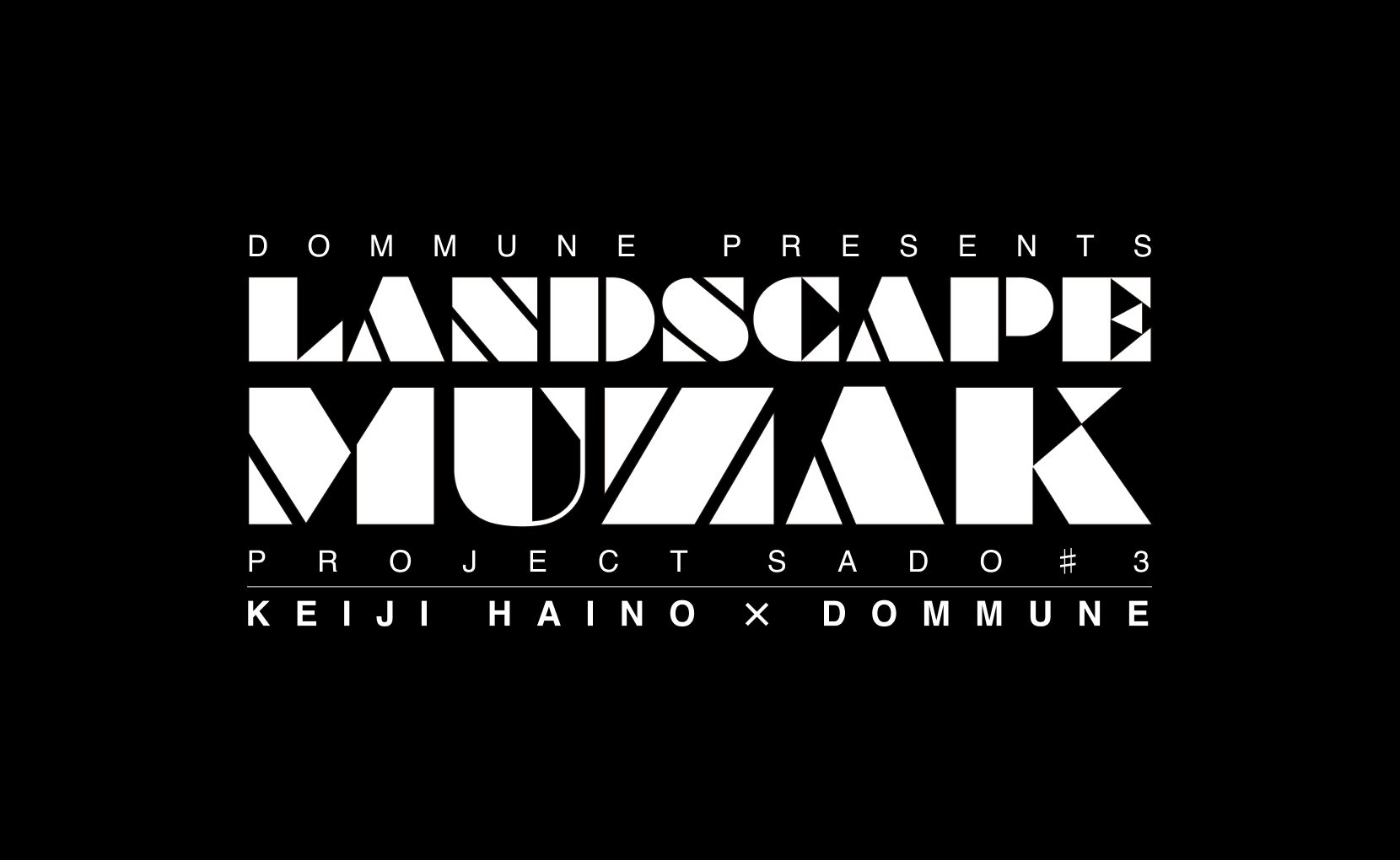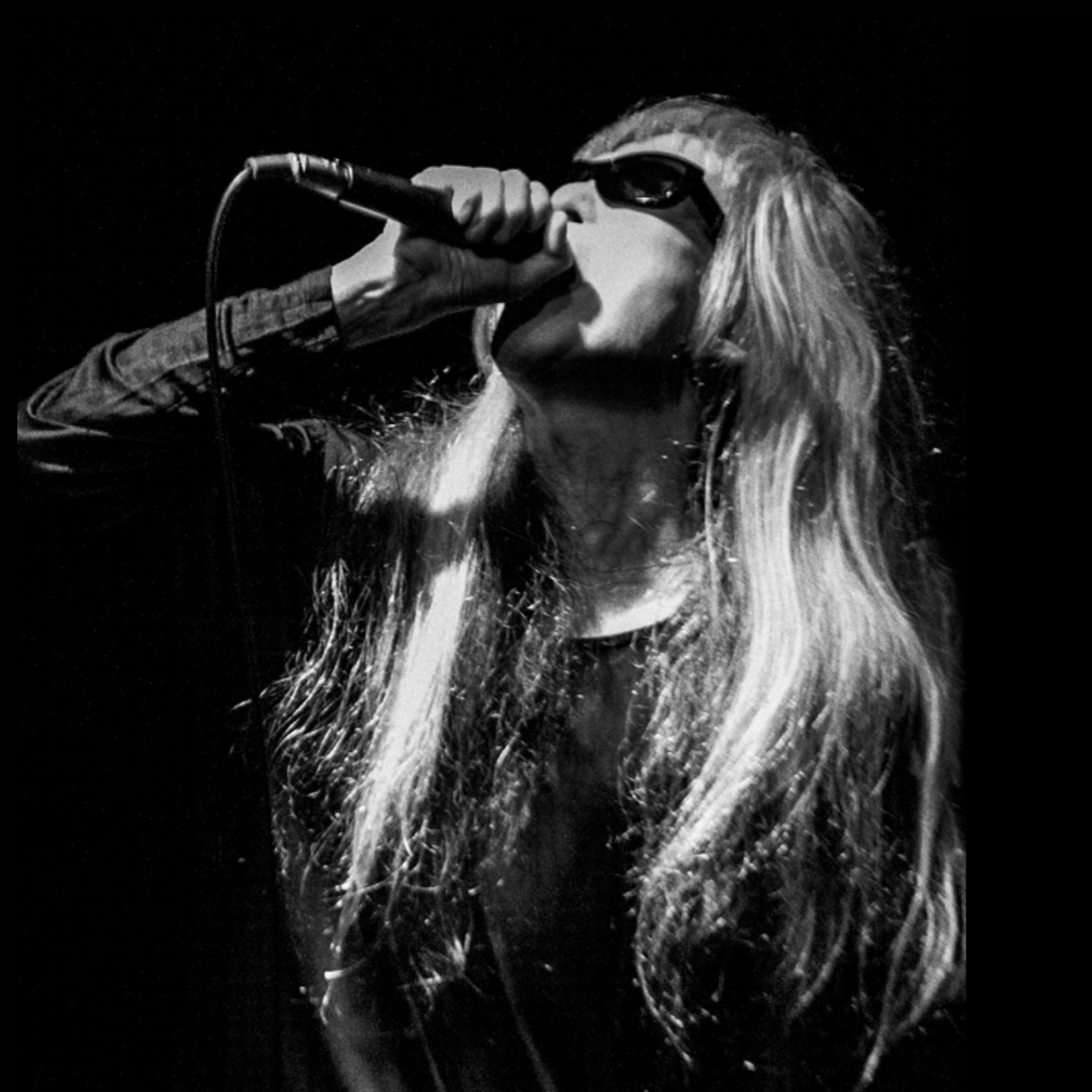21.DOMMUNE Presents “LANDSCAPE MUZAK” PROJECT SADO#3 Keiji Haino × DOMMUNE “Kyo noh(Void Noh Stage)”
Keiji Haino(Japan)

Sado Island, known as the place where Zeami was exiled, is home to a unique form of Noh theater, which evolved as a ritual offering to the gods—“Shinji Noh.”
However, the style of Noh that spread in Sado was different from Zeami's, becoming a popular “folk Noh” performed, chanted, and enjoyed by the villagers, integrating into the fabric of the local community. Over time, Noh became deeply rooted in the lives of the islanders, and from the Edo period to the Meiji period, there were reportedly over 300 Noh stages on the island.
The annual DOMMUNE project “LANDSCAPE MUZAK” PROJECT SADO♯3 features artist Keiji Haino, who will explore the essence of a new form of Noh called "Kyo-Noh," returning to the roots of expression in a completely novel interpretation of the art.
This project also examines the Noh stage itself as a sound device. By investigating various Noh stages across Sado, the team will analyze and explore the historical reasons why jars were placed beneath the stage floors since the Azuchi-Momoyama period and how the pine tree paintings on the backdrop acted as resonators for drums and voices, effectively serving as early sound systems. This research honors the legacy of the technicians who, up until the Genroku era of the Edo period, sought to enhance the acoustics of Noh stages.
In collaboration with renowned acoustical engineers from ACOUSTIC REVIVE, Keiji Haino and Naohiro Ukawa will renovate one of Sado’s unused Noh stages to develop a “pre-modern acoustic device.” Keiji Haino will then perform “Kyo-Noh,” a completely new form of Noh, on September 8, turning it into a filmed program. Both the stage itself, now seen as an ""installation piece,"" and the live-recorded “acoustic work” will be exhibited during the Sado Island Galaxy Art Festival. Don’t miss this raw, humble ""element of expression"" born from nothingness and the void—zero transformed into one.
Kyo-Noh: Keiji Haino × DOMMUNE
Acoustic Supervision: ACOUSTIC REVIVE × kozmic
Costumes: PHINGERIN
Noh Mask: Mechikuro (MHz)
Art Details
- Art Number:21
- Year of Production:2024
- Exhibition Period:August 11 (Sun) , 2024 - November 10 (Sun) Closed on Tuesdays and Wednesday (excludes national holidays)
- Admission Fee:9月8日(日) ¥3,000(チケット購入が必要です。)、9月9日(月)よりパスポート提示または個別鑑賞料
Venue & Access
- Location:Haguro Shrine
- Opening Hours:August-September: 10:00-17:00,October-November: 10:00-16:00
- Closed:Same as exhibition hall
- Parking:Parking lot available

灰野敬二Keiji Haino
Born in Chiba on May 3, 1952. Inspired by Antonin Artaud, he aimed for the theatre, but an encounter with The Doors stimulated him into music, where he has examined and absorbed a wide range of expressions from the early blues, especially Blind Lemon Jefferson, or European medieval music to popular songs across the world. In 1970, he joined a group Lost Aaraaf named after Edgar Allan Poe’s poem as a vocalist. Meanwhile, he started to work on home recordings and learned the guitar and percussion autodidactically. In 1978, he formed a rock band Fushitsusha, and since 1988, after a recuperation period from 1983 to 1987, he has been internationally active in various forms including solo, groups such as Fushitsusha, Nijiumu, Aihiyo, Vajra, Sanhedrin, Seijaku, Nazoranai or The Hardy Rocks and DJ as “experimental mixture,” as well as in collaboration with artists from different backgrounds, drawing the performance of the guitar, percussion, hurdy gurdy, string instruments, wind instruments, local instruments from across the world and DJ gears to the extreme through idiosyncratic techniques. He has released more than 200 recordings and performed live at least 2,000 times.
DOMMUNE
In 2010, Naohiro Ukawa, a distinctive figure in Japan's contemporary art scene, launched DOMMUNE, Japan’s first live-streaming studio, as a new cultural platform for the age of social streaming. Emerging as a ""final media"" during the dawn of social media, DOMMUNE has stood out for its exceptional quality of programming and vast viewership. It has hosted numerous guests from around the world, becoming a singular cultural platform. DOMMUNE even influenced the renowned London-based music channel BOILER ROOM, managing BOILER ROOM TOKYO’s Japanese branch. It’s no exaggeration to say that DOMMUNE pioneered many of today’s sound, art, and cultural streaming platforms.
Over the past 14 years, DOMMUNE has broadcast approximately 5,000 shows, spanning 10,000 hours and over 300 terabytes of data, with a total audience exceeding 200 million. Amid the breakdown of traditional broadcasting, publishing, and advertising models, DOMMUNE continues to innovate through live video streaming, revealing new possibilities for visual communication. In 2021, DOMMUNE received the prestigious Minister of Education Award for Fine Arts.
DOMMUNE Presents "LANDSCAPE MUZAK"
Since its launch in March 2010, DOMMUNE, recognized as the originator of live streaming channels in Japan, has broadcast talk shows and live performances to the world for 14 years. The mastermind behind DOMMUNE, Naohiro Ukawa, sees the acts of filming, streaming, and archiving the programs produced daily in the studio as part of his contemporary art practice.
The latest DOMMUNE project, "LANDSCAPE MUZAK," is a series in which musicians from around the globe explore hidden gems and sacred sites in Japan, perform live in resonant local settings, and turn these experiences into a road movie series. The project also involves visualizing these performances with collaborative artists and installing their works in the local communities. The first installment, a live performance during the COVID-19 pandemic at the ruins of Kitazawa Flotation Plant in dedication to the Sado Gold Mine, now a UNESCO World Heritage Site, featured a collaboration with Terry Riley and gained global attention.
The second installment featured Aki Yashiro, a singer with ties to Sado and Niigata since her “Truck Yaro” days in 1977, connecting her iconic song “Funa Uta” with Himezu Fishing Port, known for its high squid haul.
The third installment takes place on a Noh stage in Sado, where Noh has seamlessly integrated into daily life. Here, Keiji Haino returns to the origins of expression with ""Kyo-Noh,"" a bold new interpretation of Noh theater. “LANDSCAPE MUZAK” is a post-exotic, site-specific Earthwork of the social media era, utilizing social streaming to create a fresh and immersive cultural project.